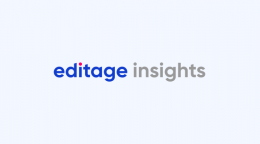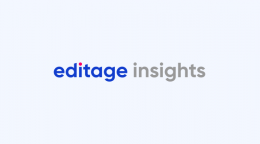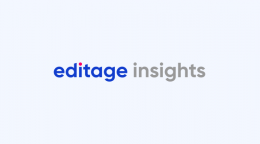What AI misses: The role of human insight in scholarly publishing

True to its promise, AI is indeed becoming a common fixture in multiple industries and workflows at an astonishing pace. And scholarly publishing is no exception. These AI-powered systems can scan research manuscripts in a matter of minutes, flag potentially suspicious data with remarkable accuracy, and can even be tailored to different requirements. While the efficiency of such systems is remarkable and capabilities seem endless. Is that enough? It is not enough to merely assess research papers for the robustness of the data—scrutiny is crucial in ensuring that what gets published is not merely 'correct' in a technical sense but also holds genuine meaning and significance within the academic discourse.
AI to the rescue in a whirlwind of changes
As the volume of research submissions has seen an unprecedented surge in recent years, a multitude of new challenges have emerged for academic publishers to navigate. Managing the increased workload and its effects on editorial tasks and peer review responsibilities are front and center. It also extends to addressing the pressing need to uphold the quality and integrity of research publications in a landscape fraught with ethical dilemmas, particularly the rising threat posed by unethical practices such as paper mills.
Considering these growing concerns, the use of AI is rapidly gaining traction in scholarly publishing. Consequently, many publishers are not only exploring but actively adopting AI-powered tools and workflows to boost efficiency, facilitate innovative practices in their services, streamline manuscript submissions, and improve the effectiveness of peer review processes, enabling more informed editorial decision-making and helping publishers remain competitive. With AI, scholarly publishers are rethinking their entire approach to the publishing workflow to better serve authors and readers alike.
Looking at the full picture
As the scholarly industry leans into AI’s capabilities, we must ask: are we trading efficiency for the value of human insight? Take peer review, for instance: it stands as a cornerstone in research publishing and has faced increasing scrutiny over the years. With the rising number of submissions, the burden on the process is becoming more intense. AI tools have the potential to enhance this process by expediting certain tasks, such as plagiarism detection and ethical statements. By automating certain tasks, human reviewers can focus on providing deeper and more constructive feedback. However, excessive reliance on AI poses risks, including "automation bias." This occurs when reviewers become overly trusting of AI outcomes, which can hamper their own reviewing skills. If such crucial tasks are entrusted to automated systems without sufficient human intervention, there is a real danger that the quality and rigor of their reviews may suffer, potentially undermining the integrity of the peer review system.
Research integrity is another topic of conversation across the industry. Assessing the scientific rigor of papers involves various factors, including potential plagiarism, image manipulation, and tortured phrasing. Although numerous AI-powered tools are available to identify these issues, AI currently lacks the capability to conclusively prove the presence of research integrity violations. And human intervention becomes essential to evaluate each flagged concern, determining whether such a concern warrants the immediate rejection of a paper or if it’s a minor breach that can be revised.
Another crucial aspect to consider is that AI primarily functions based on the data on which it has been trained, meaning AI can only work with the data it already knows, while humans can think beyond that. When evaluating research, the qualitative assessment of the topic, its nuances, and its contribution to existing literature and advancements in the field are critical. This requires creativity and insights that machines cannot provide. Therefore, while AI can assist in many areas, it cannot replicate the experience and depth of understanding humans bring.
Bias is another bump in the road. AI systems can take on the bias and flaws present in the data and algorithms used in their training. Essentially, if the training data is flawed or biased, the output generated by AI will inevitably mirror those imperfections, resulting in biased or incorrect decisions. Furthermore, the 'black box' nature of AI, which obscures the decision-making process, cannot be ignored. This lack of transparency raises serious questions about accountability. In essence, who is responsible when the AI system makes errors? And regarding reproducibility, how do changes in AI's data or algorithms influence its outputs?
AI and humans: Collaborators, not competitors
AI has successfully demonstrated its value within the publishing process, indicating that it is here to stay. However, there’s still a strong need to find a balance between technological advancements and human supervision. Rather than looking at it as humans vs. AI, it is more appropriate to view it as humans and AI—a partnership where the strengths of both can be brought together. Although the efficiency of AI is unmatched, managing repetitive tasks with impressive speed and precision, it does not have the distinctly human traits of keen attention and insightful observation that empower us to recognize nuances, think creatively, and draw deeper understanding from complex information – driving innovation forward.
Comments
You're looking to give wings to your academic career and publication journey. We like that!
Why don't we give you complete access! Create a free account and get unlimited access to all resources & a vibrant researcher community.










